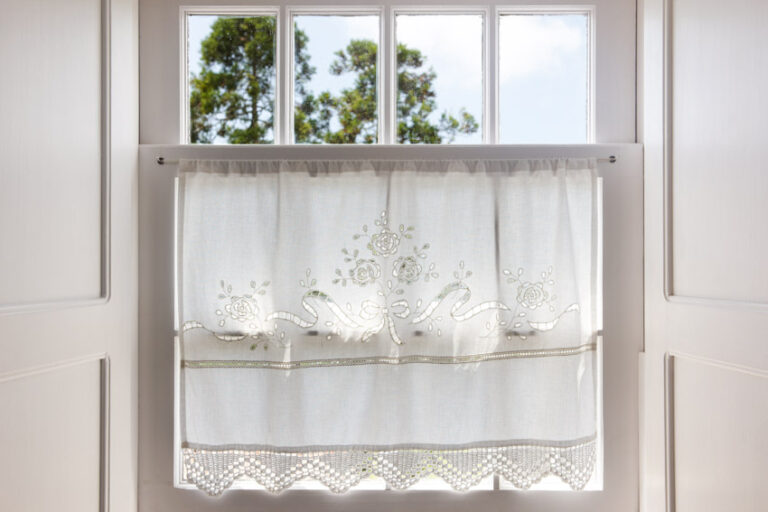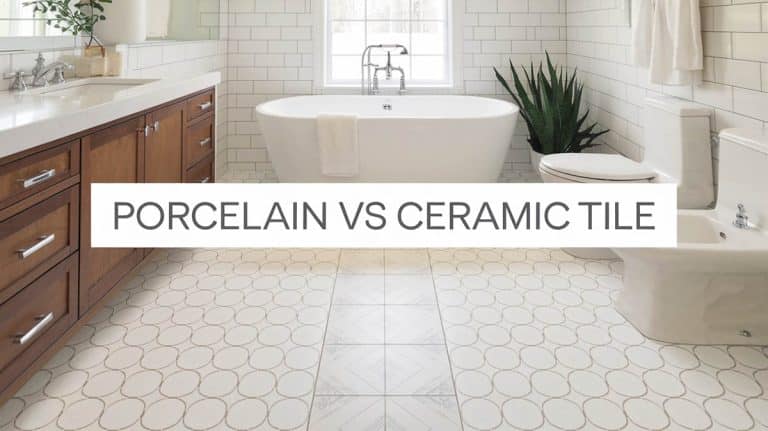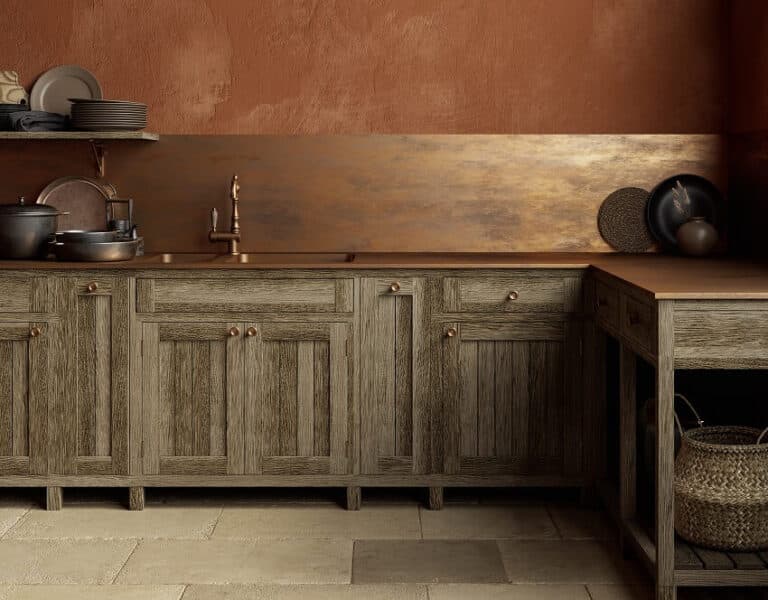Aniline Leather For Furniture (What It Is & Different Types)
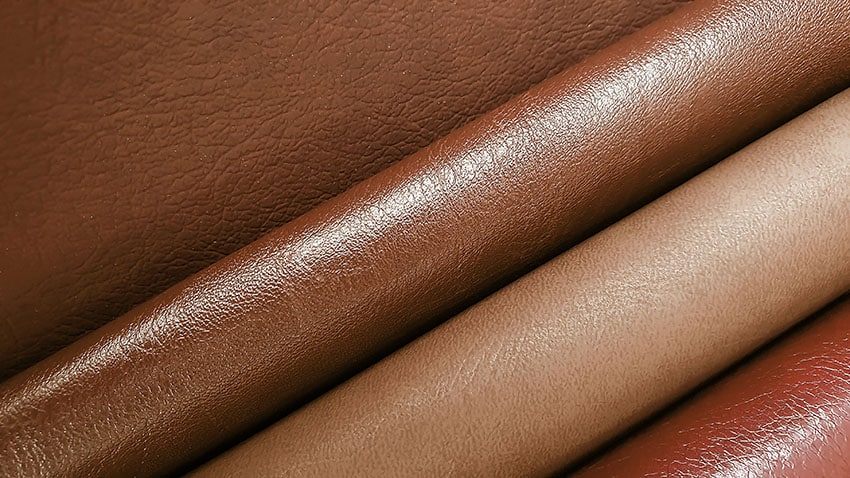
If you’ve been looking for the best leather furniture on the market, you’ve probably realized that there is a lot to know more than just the color and feel of leather. Surprisingly, the leather industry is a complex trade, and it helps to understand the basic terms when shopping for such for your home or fashion.
Aniline leather and semi-aniline are the terms worth knowing in the leather lingo. Understand that there are three key types of finishes. Aniline, semi-aniline, and pigmented leather. Each has its desirable features that give an advantage over the other.
When deciding which type of tanned hide to use for a particular application, it is essential to know the available types in the market. Or, if you are trying to restore your leather furniture, you should also identify the correct way to treat it, as using the wrong method can permanently damage its surface.
If you are in need of restoration, there are such services available. A simple Google search can reveal those services near you.
What Is Aniline Leather?

It is a soft and smooth material from different animal hides made from the highest quality raw animal skin. It is considered the most natural or “untouched leather” because no corrections or protective treatments were made to the raw animal skin. This retains the soft and supple feel of the natural material.
Aniline dye does not contain any pigment or coloring; instead, it is a dyeing process that enhances the existing color of the hide and allows the natural graining and marking to show. The soluble dye thus preserves the natural grain, wrinkles, and scars.
Moreover, since the dye is absorbed at varying levels by the material, you won’t have a uniform coloring. Though no pigment is present in the dye, there will still be a slight change in color due to the oils present in the soluble dye.
Aniline colors have more depth in color and will change over time, usually darkening in color while natural elements such as scars or marks are visible. The natural patina or heritage look, and the natural softness are significant reasons why it is considered more expensive than other types of tanned hide.
Keeping the hide’s surface is crucial; keeping it from becoming a uniform surface is critical to having a high-quality product. The way to produce this is with the use of soluble dyes. The hide absorbs the dye all the way through, resulting in a look and feel like full-grain grade. To the touch, you will feel the natural texture of the material.
Full-Aniline Leather
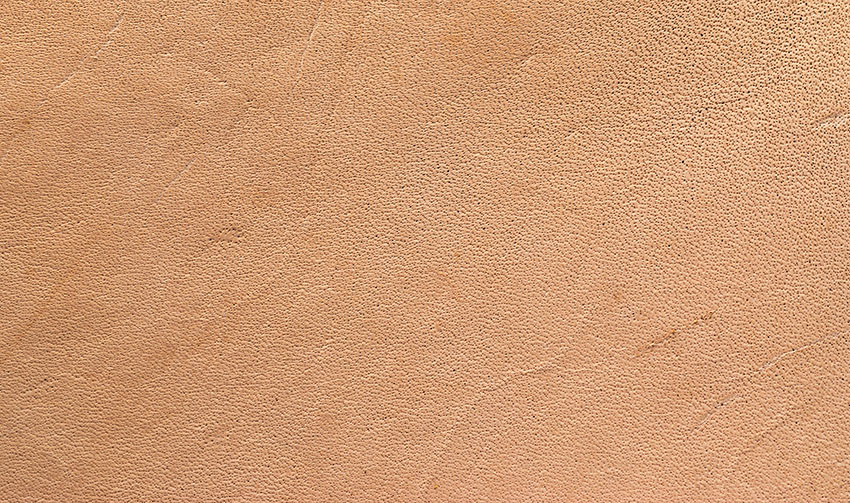
This is a variety that has undergone aniline dyeing. Moreover, full aniline also requires the use of exceptionally high-quality tanned hide. It is made from the topmost part of the hide that has been dyed using only water-based soluble dyes, which means it does not use pigment, retaining the natural color of the Napa hide.
With its excellent quality, high-end furniture, and fashion brands primarily use full aniline. Aside from the natural color, the translucent soluble enhances the organic coloring while imperfections such as fat wrinkles and scars remain visible. However, after the aniline dyeing process, there’s a slight change in color on the treated hide. The deepening of color is due to the enhancing effect of the oils.
One of the noticeable differences between full aniline and other types of natural tanned hide is the undertones it retains, which means it does not have a uniform coloring. In addition, the color will have a natural patina, which will eventually darken over time. The material is immersed in a large drum with the soluble dye to produce a full aniline. The rotating or tumbling motion allows the dye to penetrate through the hide.
When inspecting a full aniline, you’ll notice that the color is similar to the back side, which means the soluble dye is treated through and through. Drum dyeing is the process of immersing the hide in the dye and tumbling it in a rotating drum to ensure maximum dye penetration throughout the hide.
Top-Grain-Aniline Leather
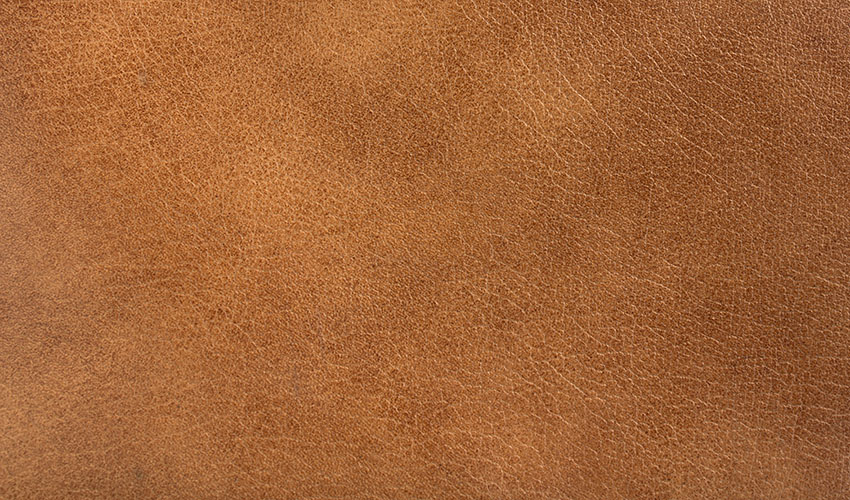
Top grain aniline is basically made out of the outer layer of the hide that has undergone the process of aniline dyeing. It is a grade that has been buffed out or sanded to lessen the natural imperfections.
Note that the grade does not pertain to the material’s quality but is classified depending on the scars, cuts, blemishes, and other natural imperfections of the hide.
As the term implies, top grain is sourced from the uppermost layer but split from the highest level and is considered the second-highest quality in the grade system. Since the top grain is sanded down, it removes the strong fibers of the hide but is still durable.
This should not be confused with full grain, which is stronger and more durable than the latter since the grains are still intact and not sanded down.
Top grain aniline is an ideal type of tanned hide that goes beyond its aesthetic value. Leather couches and furniture made from top grain are durable, soft, and breathable.
Full-Aniline Dyed Leather
The uniqueness of each dyed piece during production cannot be stressed enough. No repairs are made to damaged areas of the hide. Any such attempts for such a repair will leave unnatural markings on the surface. In fact, Napa leather, a type of aniline-tanned hide, goes through this exact process.
Instead of hiding visual artifacts, the dyeing process aims to emphasize them. Like varnishing the wood to bring out its wooden texture, the same is done here, but the dye goes down through all the layers while being soaked in at different degrees. Some areas of the material will look more dyed than others.
What Is Semi-Aniline Leather?
The semi-aniline finish is made differently. The process starts by taking the hide and giving it its surface polish, and then a pressure roller applies the texture. Instead of using a translucent dye, opaque pigment is used. Visual artifacts are hidden, but people want the natural grain to show more, so an additional step of adding another layer of colors.
For applications that require some durability and resistance to scratching, semi-aniline is the best choice. The final product is ironically cheaper, considering the additional steps in production involved.
Semi-Aniline Top Grain Leather
Semi-aniline top grain is a material that has been dyed and has a protective finish applied to the surface. It is sourced from the upper part of the hide, which has undergone the drying process, which means it has slightly been colored but still shows a degree of the natural grain and hair pores, which are slightly protected.
The semi-aniline top grain is an excellent choice if you’re looking for a hide with an almost uniform coloring and a degree of natural imperfections. You’ll have a natural look, durability, and feel but not as soft and supple as your full aniline variety.
According to interior design experts at Baer’s Furniture, aniline leather upholstery offers an unparalleled supple hand and rich, nuanced patina that develops over time.
However, its lack of protective finish also renders it vulnerable to fading, staining, and scratching from regular wear and tear. Families with children and pets may opt for semi-aniline leather, which has a thin protective coat for added durability while retaining some natural grain (Baers Furniture).
Aniline Dyed Leather

The aniline-dyed hide, which has undergone the process of submerging the material in soluble dyes with no pigment, is considered the highest-quality of hide. The semi-translucent oil enhances the natural color and will show the natural imperfections of the hide.
Since a translucent soluble is used, most hide parts chosen for this process are of the highest quality. This ensures durability and the natural look of the material.
When looking at aniline-dyed, you’ll notice that the color will vary under different light degrees. This is due to the dye treatment. The dye also enhances the natural color.
The soluble protection that has penetrated through the material will not cover the pores, allowing the material to breathe and remain temperate when rubbed against the skin. This makes the aniline-dyed hide a comfortable material for clothing as well as furniture.
Over time, the hide that has undergone aniline dyeing will develop a natural patina and its usage, giving it a vintage and authentic look.
Is Aniline-Dyed Leather Good Quality
Yes. Aniline is the top choice if the application requires softness and natural comfort. Of course, these benefits come with a cost, literally. The hide used isn’t just any hide. It comes from parts that are considered the toughest, tougher than the top grain. So, you end up with a soft yet durable material.
The fibers also have a tighter structure, making the material resistant to moisture. It also offers better heat dissipation. For these reasons, it is best used for applications that require it, such as different types of leather used for furniture.
Uses for Aniline-Treated Leather
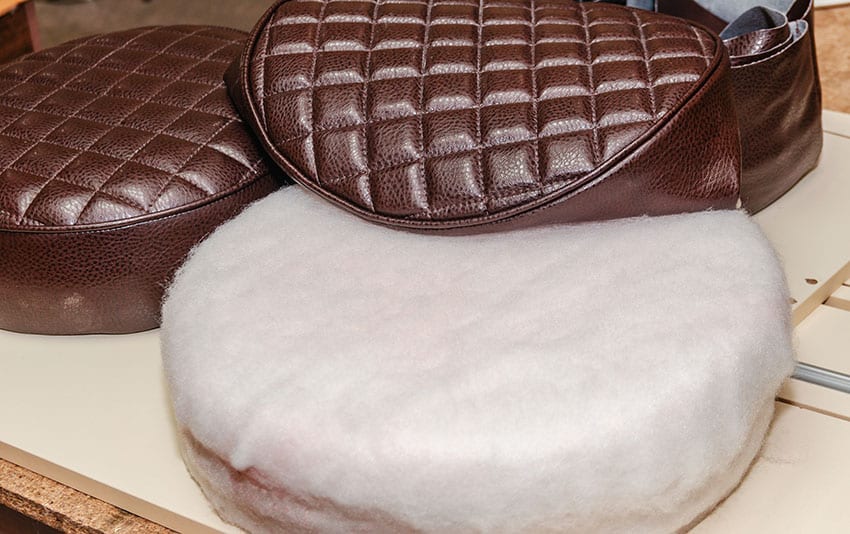
Leather Care
Caring for this material takes more effort and caution due to the exposed pores. The porous nature makes it more challenging to apply cleaning agents as they can absorb the solution, causing more damage, such as staining.
Advanced stain protection systems, conditioners and cleaners are formulated to help protect and clean the material. These cleaning solutions will retain the pores, color, and feel of your aniline. Avoid using homemade cleaning agents, as they may have chemicals that can damage its natural surface.
According to Furniture Clinic, aniline leather’s porous surface absorbs cleaning solutions slowly, so results may not be visible until the material fully dries. They recommend cleaning small sections at a time using a foam cleaner and tampico brush in circular motions, wiping away lifted dirt with a towel, and repeating the process multiple times as needed.
Protected leathers resist deeper dirt penetration, requiring less vigorous cleaning. For aniline leather, a degreaser helps remove oils and discoloration from frequented head and arm rests.
Tips:
Prevention is best. Use protection creams to add a certain barrier to the material. This prevents staining and reduces liquids from being absorbed into the material. The extra protective surface will also make cleaning easier than having a bare surface.
Turn the cleaning agent into foam. As mentioned, this material will absorb liquid solutions easily. Don’t spray the cleaner directly on your material; instead, turn your cleaner into a foam, making it easier to spread the solution without damaging the surface.
Hydrate the material to prevent damage. Over time, this material can dry out, causing cracks and other issues. Seek an expert to prevent further damage.
The type of tanned hide determines the best cleaning agent. Cleaning and protective solutions for your material will depend on the type of material you have. There are cleaning solutions that are targeted to a specific type of natural material, so it’s better to check the manufacturer’s instructions before applying them to your product.
Ask expert help for damage caused by improper cleaning. To prevent further damage, especially for upholstery, ask a specialist to avoid significant damage to your furniture.
Visible marks from repair. Minor damages can be repaired. However, expect to have visible marks and slight pigmenting to the area.
Safe Cleaning Agents for Leather
Only use cleaning agents that are formulated for materials made of tanned skin. If you plan to use a regular soap and water mixture for everyday cleaning, you can take a small amount of your homemade cleaning solution and try it on a small, obscure section of the material.
Applying a protective cream or wax on it while brand new to prevent stains is advisable. In addition, the extra layer of protection on your material makes cleaning and wiping dirt easier since most commercial cleaners have a waxy sheen.
Naturally, body oils and grease from your hands and other body parts can come into contact with your it, especially for clothing and furniture products. You’ll notice a dark stain patch on these greased areas. To remove the oily area, look for cleaning agents made explicitly for removing grease.
How to Restore Aniline-Leather
Restoring aniline finish is a must. Over time, it will accumulate dust, stains, and scratches. The simplest way to restore it is with a damp cloth and soapy water. Spraying wax is also one of the ways to give it some level of water resistance, but this can also be risky as it can modify the natural color.
Some methods also involve a bit of sanding before applying a new layer of coloring dye. Cleaning kits are also available online for convenience. Dried-out leather is restored by hydrating it, which can restore the soft feel and look of the material.
Top-Grain Versus Aniline-Grade Leather
This is created using cowhide’s outermost or topmost layer. It can be buffed out to remove imperfections and the top layer sanded. Due to this process, the top layer of top grain does not show its natural features.
For the top layer, an imitation grain is stamped onto the leather. It imparts a uniform look, but the genuine grain is absent. This technique makes top grain generally feel harder than those surfaces with aniline finish.
Semi-Aniline Finish Leather vs. Top-Grain Leather
To further understand the difference between these two, it is essential to know that semi-aniline is concerned with dyeing or finishing. In contrast, top grain is a leather grade. This means top grain can either be aniline or semi-aniline.
The grade is determined according to the amount of damage and defects, not the quality. Top grain is considered the second-highest grade, as the outermost layer of the hide is removed.
Semi-aniline, in the meantime, is the dyeing process, where a semi-opaque protective layer slightly covers the pores. This protective layer will slightly cover some imperfections of your leather, and the graining will still be visible.
Semi-Aniline vs. Full-Grain
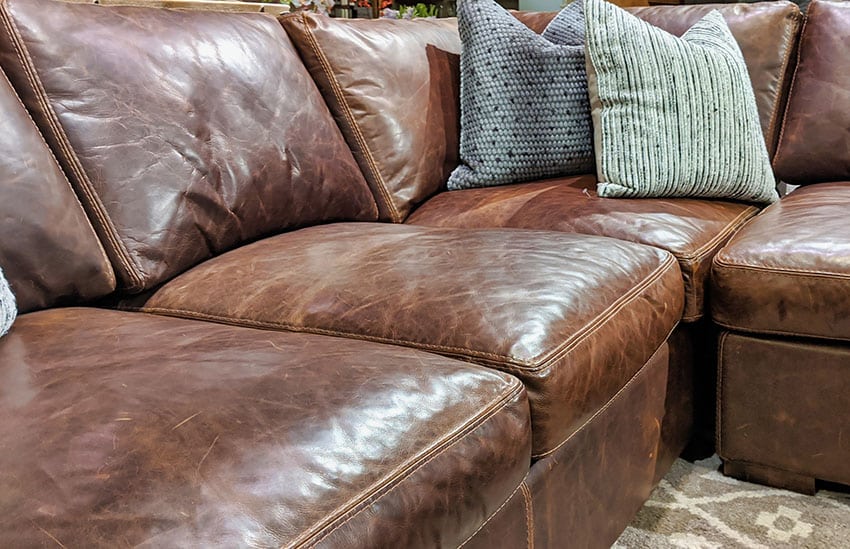
The main distinction between semi-aniline and full-grain is the dyeing process, while the full-grain is the grade or the number of imperfections. The full-grain grade is typically finished with the semi-aniline dye to increase durability and hide some stains or blemishes.
Semi-aniline is the process of dyeing the hide; it’s the finishing process. The hide undergoing the semi-aniline process will have visible pores, but these pores are slightly filled with a protective layer of pigment. The grain is exposed, but a thin layer protects the material.
If one needs a finish with slight blemishes, the semi-aniline will be able to rectify a few of the imperfections of the hide, such as scratches or wear, with opaque protection. This light coat will still vary the natural grain and color.
Since the pores are slightly covered and have a slightly opaque finish, the full-grain with semi-aniline is more water-resistant and won’t fade quickly. Semi-aniline is also easier to maintain due to the slightly covered pores, decreasing stains or dirt absorption.
Full-grain, as mentioned, refers to the strongest and most durable part of the hide. This means it has not received any buffering, sanding, or other altercation on its surface, which means you’ll see more graining and natural imperfections.
Visit our guide about nubuck leather for more related content.

